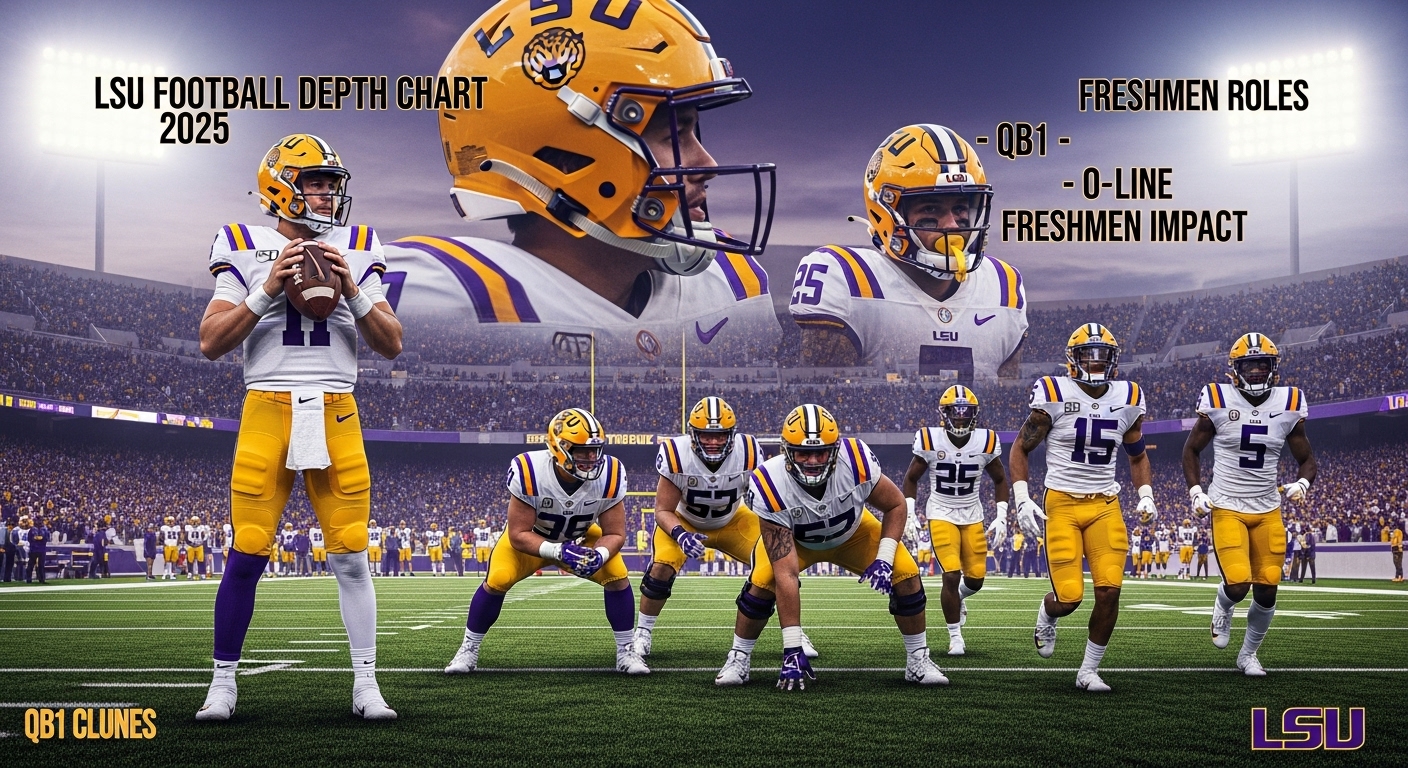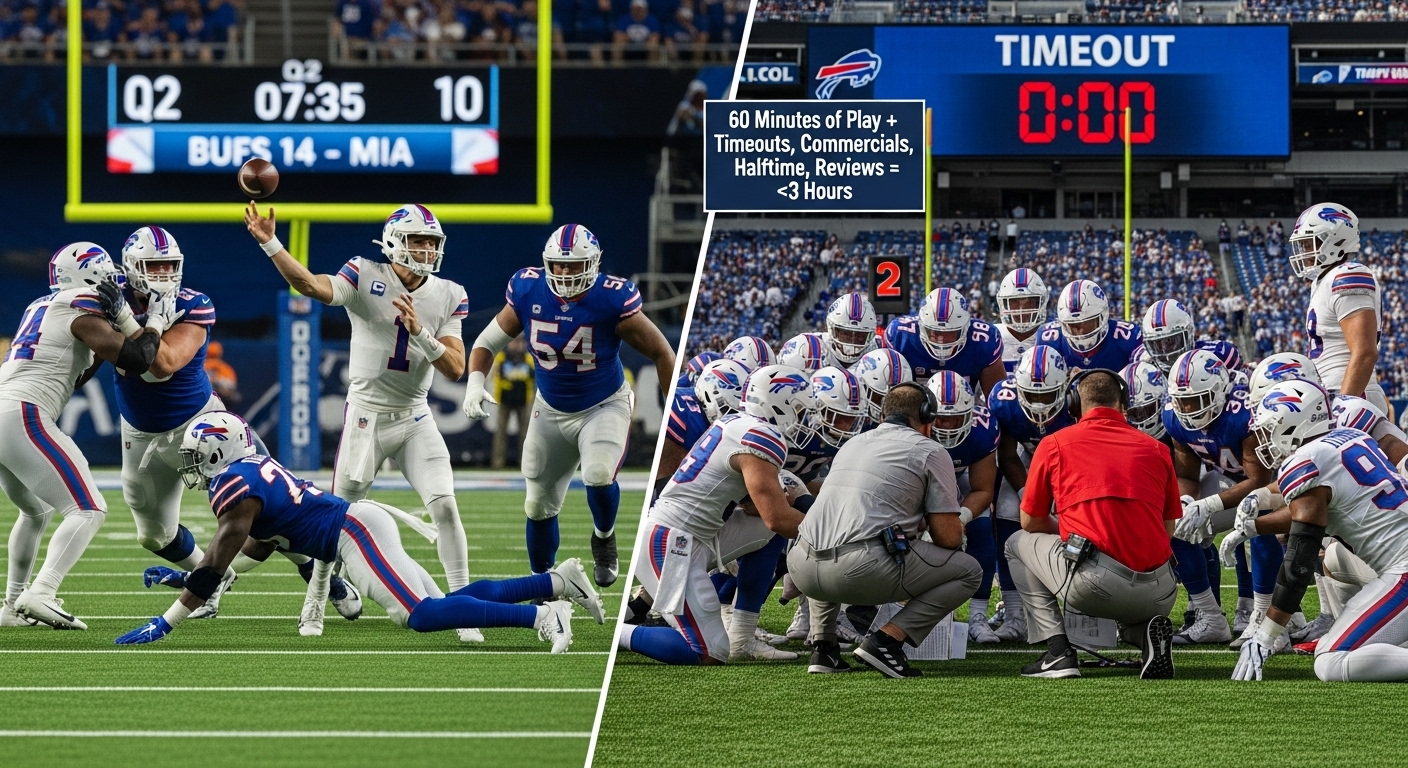As someone who’s charted LSU depth battles for 10+ seasons, here’s the quick truth you want: the lsu football depth chart is a living beast. It shifts with camp reps, injuries, and yes, coach-speak. In my experience, the LSU Tigers roster always hides a surprise at QB, a sneaky nickel on defense, and that one special teams ace who becomes a cult hero in Tiger Stadium.
What I check first (so you don’t have to)
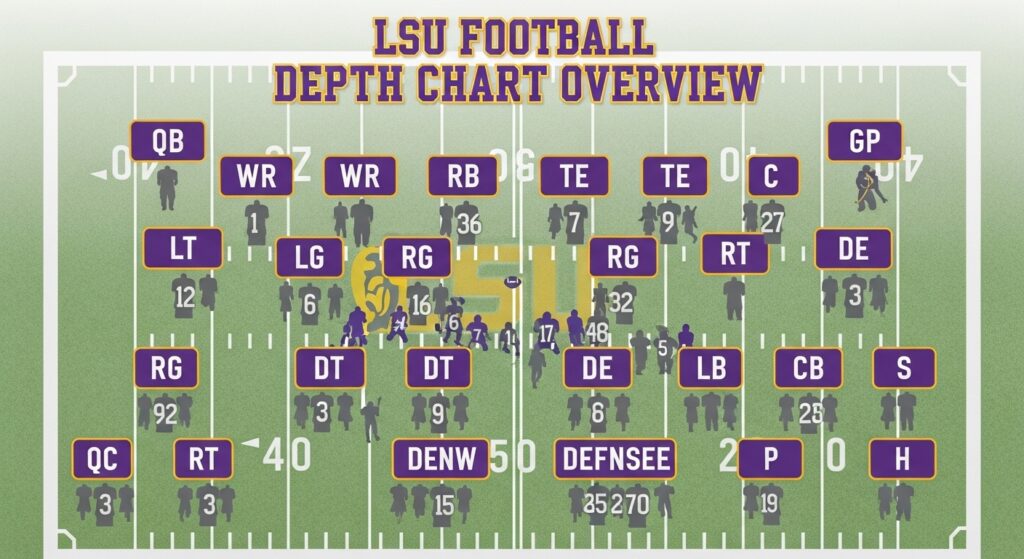
I go straight to three things: who’s taking real QB1 reps, the health of the offensive line two-deep, and which freshmen are burning redshirts on special teams. If those three boxes are green, Baton Rouge breathes easier. If not, we all reach for sweet tea.
If you want the industry baseline—and the “OR” designations that make message boards melt—this is the reference I cross-check most: ESPN’s depth chart listing. I don’t treat it like gospel. More like a weather report: useful, but bring an umbrella.
Quarterback: Who’s really QB1?
Coaches won’t say it early. Doesn’t matter. I watch third-down reps in scrimmage, and who gets the first two-minute drill. That’s your answer. I’ve always found that the QB with the cleaner pre-snap routine wins the job, not the one with the biggest arm. SEC defenses punish hesitation.
- Look for: Command at the line. Quick game timing. Ball out before the blitz hits.
- Ignore: Spring game hero ball. That’s for TikTok, not November in Tuscaloosa.
When I want backstories on guys fighting up the two-deep—like that backup who suddenly takes first-team reps midweek—I check recent Athlete Spotlights to see who’s trending for more snaps.
Wide Receivers and Tight Ends: The fun room
At LSU, the WR room is never empty. If you see three or four names listed “OR,” that’s not indecision. That’s sub-packages. One vertical burner, one boundary bully, one slot who lives on option routes. Tight end usage tells me how balanced the play-call sheet plans to be.
- Boundary WR: Contested catch merchant. Think back-shoulder fades and quick outs.
- Slot: Third-and-6 lifeline. If the slot’s targeted early, OC’s in rhythm.
- TE: If he’s flexed, expect RPO slants. If he’s inline, we’re pounding inside zone.
For recent game context—who actually flashed in live action—I skim Match Highlights. Numbers lie. Clips don’t.
Running Backs: Rotation tells the truth
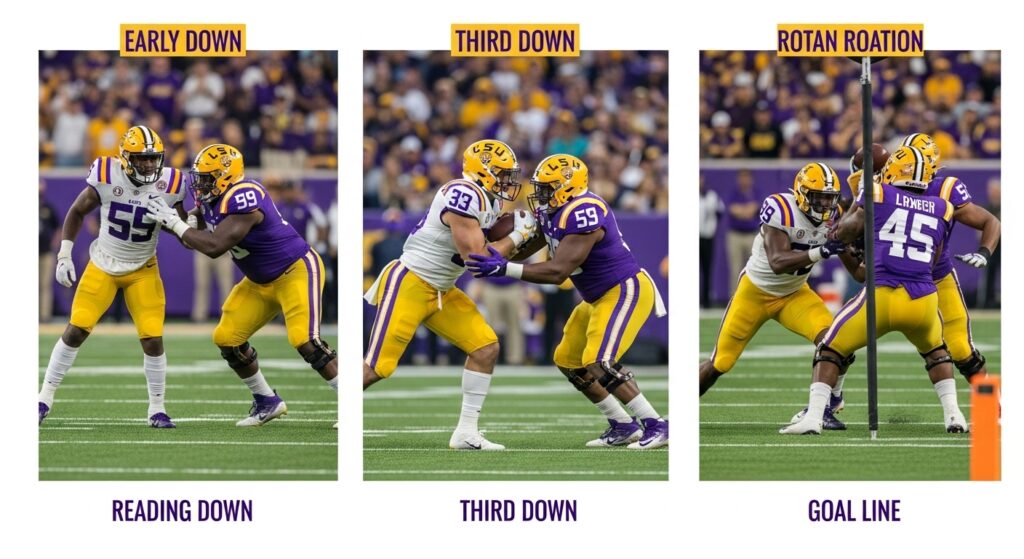
Don’t obsess over the top line. LSU always rides the hot hand by the second quarter. I care who’s trusted in pass pro, who catches screens, and who gets short-yardage. That trio maps to “early down,” “third down,” and “goal line.” You’ll see it by Week 2 if you’re paying attention.
- Early down: Vision and patience behind zone. No wasted steps.
- Third down: Blitz pickup grown-up. If he whiffs, he sits.
- Goal line: Pad level, ball security. No hero dives.
To gauge how the SEC is shifting around run fits and nickel trends (which matters for LSU’s ground game), I track league-wide Sports Trends. Helps me spot when defenses are cheating into the box.
Offensive Line: The engine that decides everything
I’ve said this for years: I don’t care who the QB is if the LT/LG combo leaks. LSU’s two-deep on the OL has to be stable by Week 1, or the entire offense feels jittery. Watch the communication between C and RG. If protections shift cleanly, you’re good.
Projected Offense Two-Deep (subject to the usual chaos)
| Position | Starter | Backup | Notes |
|---|---|---|---|
| QB | QB1 with two-minute reps | QB2 package-ready | Watch: red zone usage vs. drop-8 |
| RB | Early-down hammer | Third-down protector | Short yardage could be RB3 |
| WR (X) | Boundary bully | Freshman “OR” vet | Back-shoulder specialist |
| WR (Z) | Vertical stretcher | Gadget speed | Jet motion threat |
| Slot | Option-route guru | Reliable chain mover | Third-and-6 magnet |
| TE | Flex move TE | Inline blocker | RPO key read |
| LT | Blindside anchor | Developmental length | Footwork vs. speed |
| LG | Steady pass-setter | Utility swing | Pulling in gap schemes |
| C | Protections captain | Guard/C swing | Blitz IDs matter |
| RG | Road-grader | Long-term starter type | Combo blocks with RT |
| RT | Anchor vs. power | Depth with edge experience | Set points vs. bull rush |
If you want the official names and jersey numbers the staff is working with, the most accurate list is the LSU Athletics roster page. I keep that open when I’m rewatching tape.
Defense: The personality of this team
LSU’s identity swings here. When the Tigers get disruptive up front and sticky at corner, the offense can be patient. When they don’t, it turns into track meet football. Fun for neutrals. Pain for me.
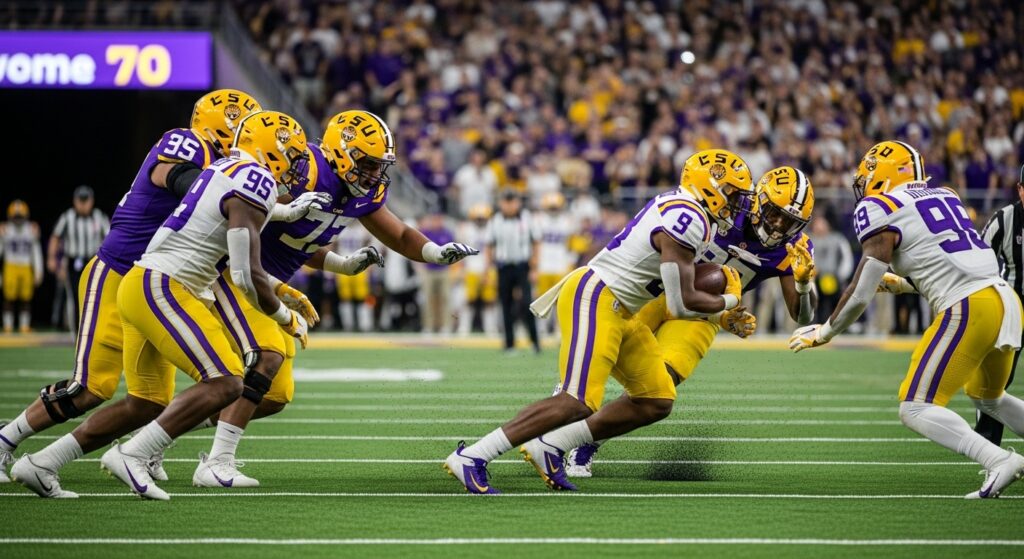
Defensive Line and Edge: Wreck stuff first
I look for interior penetration on second down. That’s the tell. If the DTs win quick, third-and-long becomes a party for the edge rushers. If they don’t, everyone argues about the secondary while the issue is right there in the B-gap.
- Base: 4-2-5 with heavy rotation at end.
- Sub: NASCAR front on passing downs. Keep the legs fresh.
- Key stat: Pressure rate, not sacks. Sacks are lagging indicators.
Linebackers: The communicators
Middle linebacker sets the front. If he’s late, the whole thing looks like a spilled toolbox. I want a WILL who runs and finishes, not just cleans up. LSU’s best defenses had backers who beat blocks, not wait for help.
Secondary: Corners and the dreaded “OR”
The CB spot at LSU is almost always an “OR” on paper because packages matter: boundary vs. field, press vs. off, and who tracks the opponent’s WR1. Safeties? If the nickel can tackle, you can cheat a safety into robber coverage and kill RPOs.
Projected Defense Two-Deep
| Position | Starter | Backup | Usage Notes |
|---|---|---|---|
| DE/Edge | Primary pass rusher | Fresh legs in sub | Third-down package star |
| DT | Penetrator | Two-gapper | Rotation by drive count |
| DT | Run-stuffer | Quick-twitch backup | Short yardage hammer |
| Edge/DE | Set the edge | Speed-only rusher | Watch contain vs. mobile QBs |
| LB (Mike) | Signal caller | Special teams ace | Blitz timing matters |
| LB (Will) | Tackle machine | Coverage specialist | Hook-curl awareness |
| Nickel | Hybrid DB/LB | Freshman with juice | Tackle rate decides snaps |
| CB1 | Press corner | Field corner | Travel with WR1 when needed |
| CB2 | Off-man comfort | Physical boundary | Rotate vs. size/speed matchups |
| FS | Range-first | Special teams vet | Angles vs. post routes |
| SS | Box safety | Nickel-capable | RPO killer |
When I’m gaming out red-zone touches or sack probability for weekly picks, I’ll cross-check with some Fantasy Tips. Not because fantasy is real football (calm down). But because snap counts often show who the staff trusts.
If you prefer a clean list of who’s actually on the team—transfers, true freshmen, walk-ons—the Yahoo roster page is a handy second screen. Good for jersey numbers and quick bios when a new name pops on third down.
I also drop in on broader Multi-Sport News to watch how injuries or NCAA tweaks ripple into lineup decisions. A tiny rule change can move a backup into a starting role overnight.
How I read an “official” depth chart without losing my mind
- “OR” means packages. It’s not indecision. It’s chess.
- Special teams = tells. First-team punt team usually contains hidden starters.
- Redshirt watch. If a freshman plays only on kick coverage early, staff might be preserving the four-game window.
- Injuries lie. “Day-to-day” sometimes means two weeks. Or zero. Coaches love mystery.
- Two-minute drill reps. That’s who the staff trusts. Period.
Mini-blogs inside the blog (the quick answers you actually want)
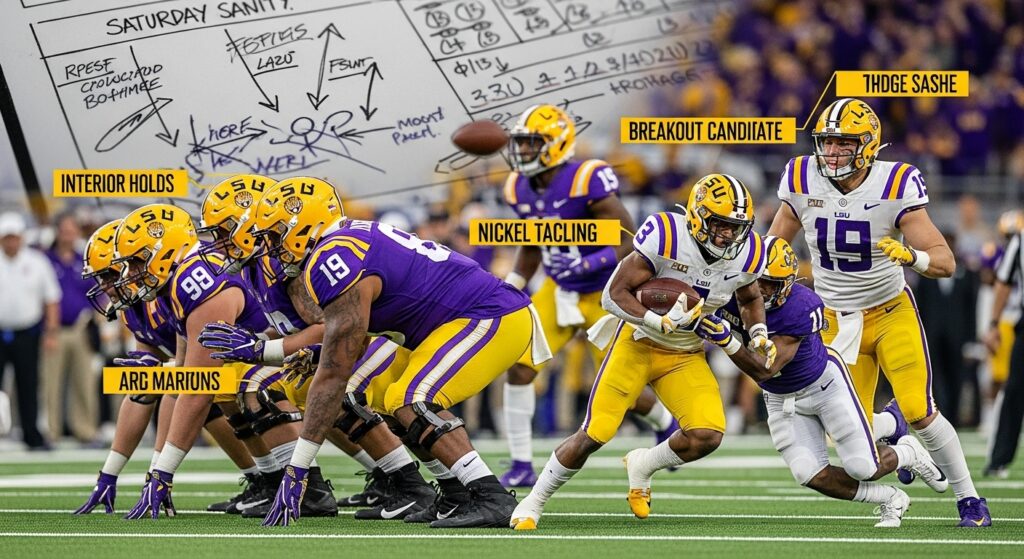
Which position group is the swing factor this season?
Offensive line. If the interior holds, the run game gets downhill and the play-action shots land. If not, we’re back to hero ball. I hate hero ball. Looks cool, loses games.
What’s the sneaky key on defense?
Nickel tackling. One missed tackle on second-and-7 turns into tempo, turns into busted coverage, turns into me muttering at my TV like a cartoon villain. LSU’s best secondaries erased flats and bubbles. Make offenses play left-handed.
Who’s the breakout candidate?
Watch the second edge rusher. The one who eats on third-and-long because the LT is busy with the star. If he wins 1-on-1s, the entire defense goes turbo.
How does this help my Saturday sanity?
Set three expectations and stick to them: a steady OL, a QB who avoids negative plays, and a defense that forces field goals. If two out of three hit, LSU wins a lot.
Sticky notes I keep on LSU every season
- Brian Kelly’s teams eventually find an offensive identity by Week 4. Patience, but verify.
- LSU WRs rotate by concept, not by seniority. Don’t panic if a veteran plays fewer snaps in a specific game plan.
- Two-deep on DL needs trust. If the second unit holds serve, this defense travels.
- Special teams is the tie-breaker in close SEC games. Hidden yards decide titles. Not kidding.
If you’re new to the program and want background lore, history, and why the expectations are sky-high every year, check the LSU Tigers football history pages later. But for today, all you need is to read the signs above and not overreact to one bad drive.
Snappy summary (for your group chat)
- QB: Watch two-minute reps to spot the real QB1.
- WR/TE: Rotation equals packages. Slot usage = third-down plan.
- RB: Third-down back plays because of blitz pickup. Not hype.
- OL: Interior stability is non-negotiable.
- DL/Edge: Pressure rate over sack totals.
- Secondary: Nickel tackling is the hidden key.
I know you came here for the lsu football depth chart tea, and yeah, I gave you the map. The rest? Watch who plays when it’s loud and late. That’s the whole story.
If I’m choosing a single live resource to sanity check week-to-week movement after games, I peek at Sports Trends again on Mondays. Helps me separate buzz from real changes.
And yes, I still keep a notepad for substitutions between the 7:00 and 5:00 marks in the second quarter. Old habit. Works every time. The lsu football depth chart might be written in pencil, but usage is written in neon if you actually watch.
FAQs
How often does the LSU depth chart really change?
Weekly in small ways, monthly in big ways. Injuries and matchups cause most of it.
What’s the fastest way to tell who’s starting at QB?
Watch who runs the first two-minute drill and the first third-and-long. That’s your guy.
Do the “OR” labels mean coaches are confused?
No. It usually means sub-packages. Field vs. boundary, speed vs. size, that kind of thing.
Which stat tells me if the defense is for real?
Pressure rate and red-zone TD percentage. Sacks and picks happen after those two improve.
Why does the RB rotation look random?
It’s not. Pass protection, ball security, and short-yardage success decide it, not highlights.

I’m Oliver Scott, and I live to bring every sports moment to life. Get breaking multi-sport news, in-depth match highlights, fantasy tips, athlete spotlights, and the latest trends right here.

